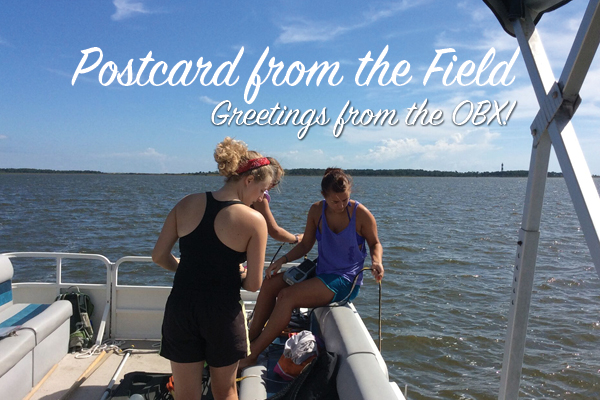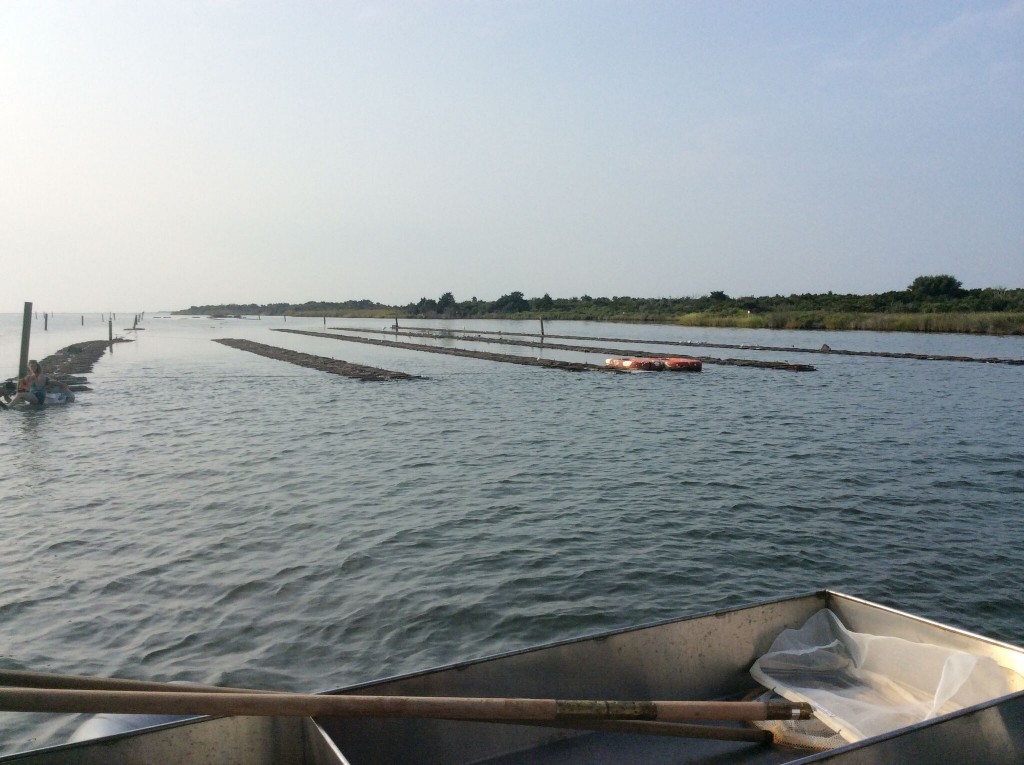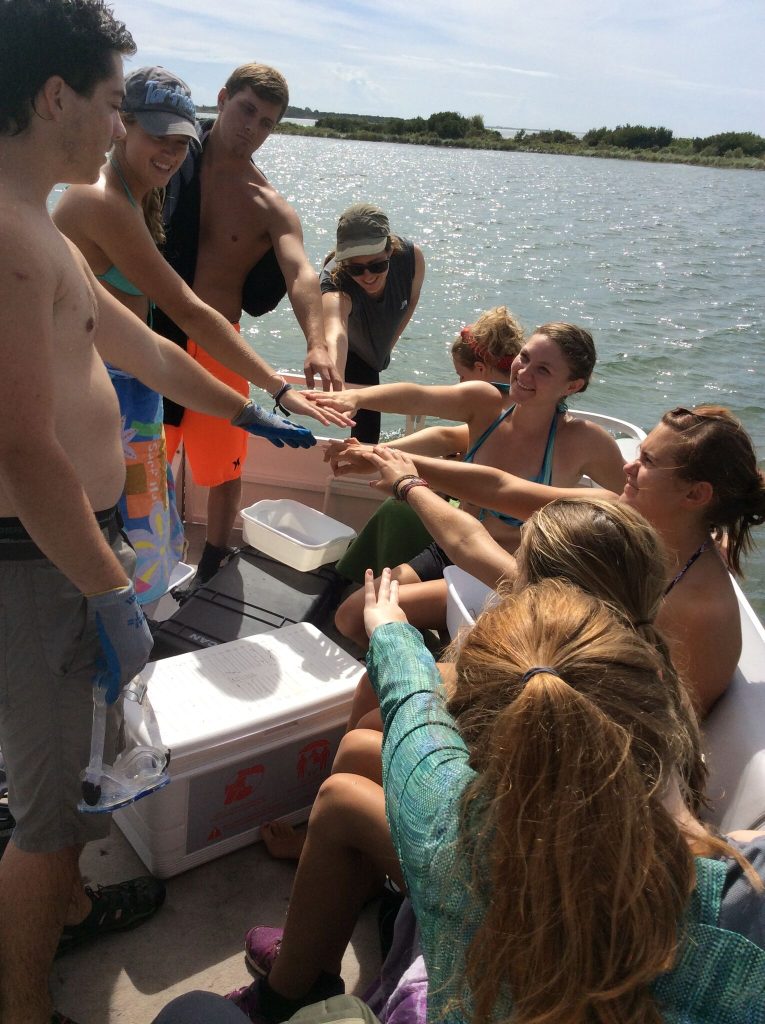Postcard from the Field: OBX – Cinnamon Moore ’17
May 26, 2016
During the fall semester, I spent four months at UNC’s beautiful Outer Banks field site. While taking classes and participating in an internship, I, along with nine other UNC students, conducted a capstone research project titled “The Social-Ecological Role of Oyster Aquaculture in North Carolina.” We spent the semester looking at the effects of oyster aquaculture from two different tracks: ecological and social. By taking a social-ecological approach, we hoped to assess how oyster aquaculture facilities affected the natural environment they were placed in as well as the local perceptions surrounding them.
Before this capstone, my knowledge on oysters only extended to how delicious they were when smothered in cocktail sauce. However, after reading Shucked and many scholarly articles, I learned that these tiny creatures play a huge role in ecosystems. They are able to filter up to 50 gallons of water a day, taking out potentially harmful pollutants and particulates which creates a healthier environment for other organisms. They also provide crucial habitats for marine creatures. The question our research team attempted to clarify was if oyster aquaculture facilities could provide these beneficial ecosystem services, or if they would simply cause more harm than good.
Currently, North Carolina has one of the smallest oyster industries along the east coast, even though it has ideal water and climate conditions for the species to thrive. While Virginia’s oyster aquaculture industry brought in $9.5 million in revenue in 2012, North Carolina’s industry only reached about $600,000. Recently, the state has shown interest in expanding aquaculture and eased some of the restrictions related to the industry. However, several conflicting studies have been published arguing whether aquaculture facilities benefit or harm the areas in which they are located. Our research would add to this pool of information and hopefully add clarity to whether the industry could be a good fit for the North Carolina coast.
For the natural science portion of the study, we analyzed whether there was a difference in water quality between 3 different sites in the Pamlico Sound: an aquaculture facility, a wild oyster reef, and a control site with no oyster presence. By measuring qualities such as oxygen content, turbidity (the amount of particles in the water), and chlorophyll (the presence of phytoplankton), we were able to compare the data between sites and see if there was a difference that could be attributed to the aquaculture facility. We also sampled to see if there was a difference in the density of submerged aquatic vegetation (SAV) between the three sites. SAV acts as an important habitat for marine organisms, and so areas with SAV presence are protected under North Carolina law.
A major obstacle faced by potential oyster farmers is the current regulation surrounding oyster aquaculture. Currently, there is zero tolerance for placing an aquaculture facility in an area with any SAV presence, creating a long and costly leasing process for new farmers. If the density of SAV is found to be the same or higher in areas around the aquaculture facility, then these findings would go against the studies stating oyster farms destroy these important habitats.
To add to our research, we also conducted a social science research project. Over the course of four months, we interviewed 27 locals who use and value the Pamlico Sound in order to document their perceptions of oyster aquaculture. Our interviewees were key stakeholders, including oyster farmers, commercial fishermen, government and nonprofit agency staff, and recreational business owners, whom we believed would accurately represent the local attitude towards the oyster aquaculture industry. The interviews covered topics such as attitudes towards a potential increase in the industry, perceptions of how oyster aquaculture would affect their use of the sound, and insights into why the industry hasn’t grown in North Carolina.
Overall, the results showed that the aquaculture site had no discernable negative effects on the natural environment. There were no apparent differences in water quality measurements between the sites, and the SAV density near the aquaculture site was comparable to that of the other two areas.
The interviewees who participated in the social science study suggested that one of the main problems they anticipated from a growth in the industry would be that the facilities might impact their personal use of the Sound. However, the general consensus shared amongst the interviewees was that the industry would provide a positive economic boost for the coastal communities.
With these combined results, my classmates and I could find no reasonable objection to an expansion of the oyster aquaculture industry in North Carolina. We were also able to spend many days on the Sound, enjoying the amazing weather at the Outer Banks while conducting research, and met many incredibly interesting people. It was a semester I will never forget.



